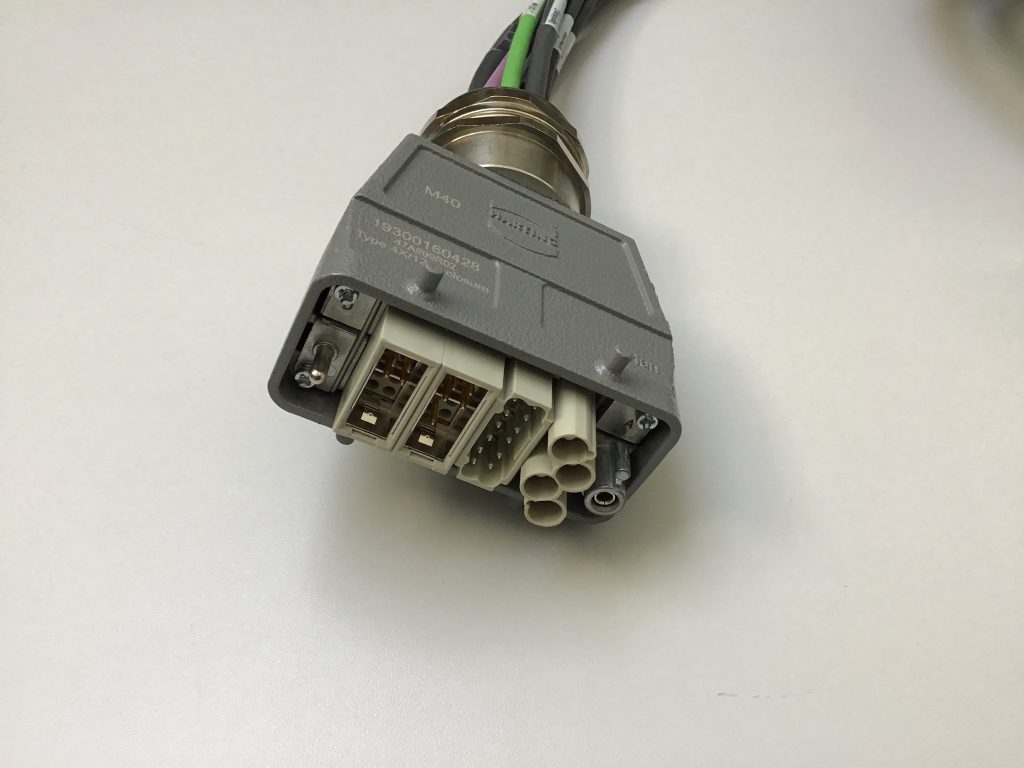Dimensioning and harnessing of rectangular connectors
Beke Nieszytka | 9. July 2019
In the field of heavy rectangular connectors for the industry, there are several well-known manufacturers on the market. Harting with the well-known Han series, Weidmüller RockStar, Wieland Revos, Ilme, Lapp Epic, HTC, Tyco, Amphenol, Multicontact, Phoenix, Wain and much more.
The application areas of these connectors are equally diverse. They can be found in these sectors:
- Mechanical engineering
- Traffic engineering
- Energy production and distribution
- Solar and wind energy
- Automation technology
- Industrial equipment
- Telecommunication and broadcasting technology
- Industry networks
- Medical technology
- Event and stage technology
When choosing the correct plug-in connector for your own application, you can create almost endless combinations of different housings. First, you have to decide between connector housing, connector base, attachment housing and coupling housing with different contact inserts. These in turn combine with various connection techniques of crimp, cage clamp, winding connection via solder, axial, quick and IDC connection up to the axial spring clamp technology.
How do I choose the right connector?
As a rough formula: Assemble the connector from the inside out…
1. Choose the right contact insert
Based on the required contact points, you first choose the right contact insert that is equipped with the appropriate number of poles. When selecting, attention must be paid to the socket or pin.
2. Choose the right housing
The size of the selected contact insert then determines the housing to be used. Here, in addition to different housing types (connector housing, connector base, attachment or coupling housing), the size of the thread and the type of the locking mechanism need to be considered.
3. Choose the right screw connection
Choose the right screw connection based on the cable diameter and the thread size at the connector housing.
…. and ready.
Okay … this simplified formula does not represent everything or anything – such as the question of the type of contact.
What type of connection is the best?
If, for example, you want to “hide” high outputs with the correspondingly high core cross-sections, the choice is equally limited. Here it will probably have to be an axial screw termination.
But often one actually has the choice. – Given the choice, I will go for the best option at the most cost-effective price. – But what is the best? Crimp, screw, solder …?
When it comes to harnessing on the field this means a tool-free contacting as far as possible on the construction site. Then, you are very well-equipped with a screwed contact or a cage clamp terminal. A screwdriver, a cable stripper and a few wire end ferrules should be part of the basic equipment on a construction site.
When it comes to cost-effectiveness with high quality the machine-processed crimp contact cannot be surpassed. Because, if you use the vibrating crimper AM03 from Zoller+Fröhlich, as we do at igus®, the advantages of this processing method can be quickly recognised.

Harnessed Harting plug-in connector
When we at igus® arrange for the supply of ready harnessed cables with “Harting connectors”, the customer usually wishes for a cable that he would install as defined without ever having to do anything there again. Then a lot speaks in favour of the machine processing of the contacts.
Quality, throughput, productivity and, with that, the price, clearly speak in favour of this processing method. Combining the machine processing of the contacts with upstream machine cable processing, specialised harnessing areas and Kanban bearings, leads to delivery times that will make eyes shine.
Look for the right connector in our connector shop.
Or find your harnessed cable in the readycable® Product Finder.

